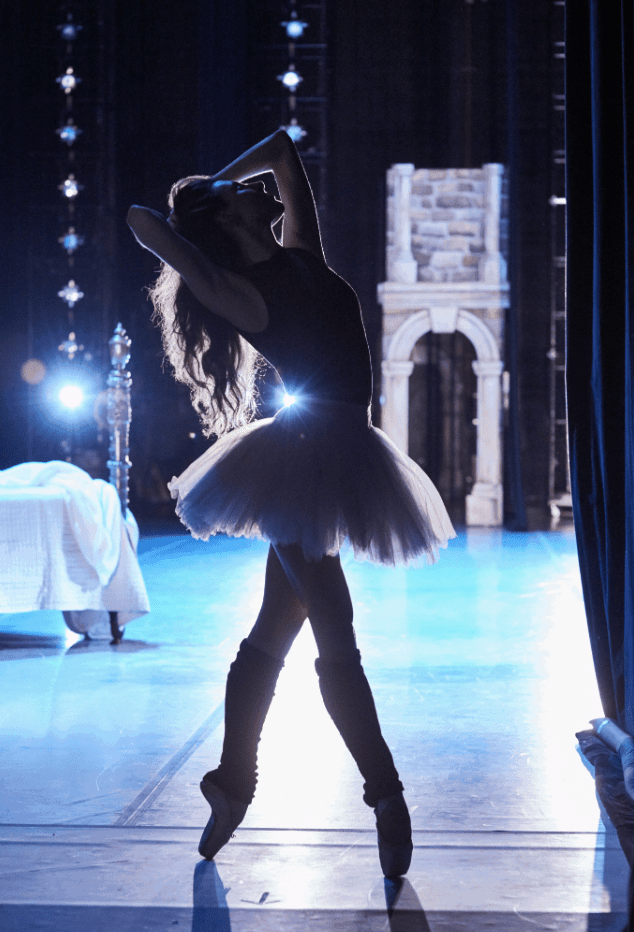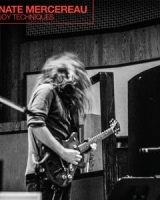Ballet Now

Photo Courtesy Stick Figure Productions
Ballet Now is Steven Cantor’s latest film. On the surface it is five days in the life of Tiler Peck, a New York City Ballet Principal Dancer who has the opportunity to create a one-time production in Los Angeles marrying the styles of contemporary, classical ballet, hip hop, tap and of course, Bill Irwin— a clown. What Cantor manages better than most documentary film makers is not only tell a story but allows a story to tell itself. It requires a minimalist approach to glean dramatic tension in a “making of” documentary. Anyone who sports an iPhone knows even the most compelling moments in life taste stale when there are no edits or changes in camera angles. Watching ten minutes of unedited footage is never the same as the experience of observing the same ten minutes in real time. In a theater, we choose where to look, our gaze is within our control. When we watch a film, our gaze is no longer our own, we are entrusting our experience to the filmmaker. We expect magic. Even when watching a documentary, we must suspend disbelief in order to stay engaged. Ballet Now is that magical piece of filmmaking.
At the beginning of the film, we hear the echo of something violently banging against concrete, reverberating in the empty Los Angeles Music Center. Cut to a beautiful ballerina beating the crap out of one of her pointe shoes so that it can’t make a loud sound on the stage. When pointe shoes make noise “they take the magic away.” Exasperated, Tiler breaks down some of the structure that some cobbler in England carefully crafted by hand specifically for her feet. In a brief moment, Cantor captures the gestalt of the entire film with a few loud “thwaps.” Tiler damages the beautiful in order to make it sing.
A perfectionist, Tiler must do the overwhelming. The first woman ever invited to curate the The Music Center’s Ballet Now program, Tiler produces, directs and curates the entire program, oh and she dances in most of the fifteen pieces. The dance world suffers no shortage of male choreographers and artistic directors, so making a documentary about putting together a show in five days by someone who has never done something of this magnitude requires Cantor’s filmic technique of high stakes drama sans cheese. (Though he throws in just enough adorable dog moments to help us relax.) Classical ballet dancers, particularly women understand the expression, “great effort, little reward.” Ballet is no joke. It takes hours of training, six days per week from a young age to even be ready to audition for a professional company at the age of eighteen. No family of a ballet dancer isn’t impacted, whether driving, the expenses (Pointe shoes run about $100 a pair— before elastics and ribbons and they only last about six hours), separating a family, and Tiler is not unique in this regard.
Tiler grew up in Bakersfield, California, an inconvenient three hours outside of Los Angeles. Her mother owned a dance school where she began dancing at the age of three, but her talent outstripped her training so her grandmother, Princess, drove her the two-hundred-mile roundtrip journey to Los Angeles every day, six days per week beginning around the age of ten. We meet most of Tiler’s immediate family who seem to respect the line between involved and hand’s-off and we see that imbued confidence in Tiler in how she approaches her dancers and choreography. Some of the choreography is from contemporary ballet choreographers such as Justin Peck and Christopher Weldon. Michelle Dorrance’s1.2.3.4.5.6. is a semi-fluid collaboration between Dorrance, Virgil Gadson, Byron Tittle and Tiler. 1.2.3.4.5.6. fuses rhythm, counter rhythm, ballet, tap, hip-hop, contemporary dance, set choreography and improvisation. The dancers are their own orchestration; try holding a six-count clap without skipping a beat while dancing. It requires as Dorrance says, “locking in” with the other dancers. Watching a filmed dance performance is rarely a substitute for live simply because of engagement. As an audience of a two-dimensional object watching three-dimensional bodies move through space, there can be a palpable disconnect. It is the difference between caring and not caring. A documentary is never omniscient, there is always a point of view. If we are allowed to see too much, the film becomes about process and is no longer magical. If we see too little, it is thin. Perhaps when a director has made twenty films, we get just the right amount and all we want is the next one.

Available on Hulu
Directed by Steven Cantor
Stick Figure Productions
SIFF 2018

